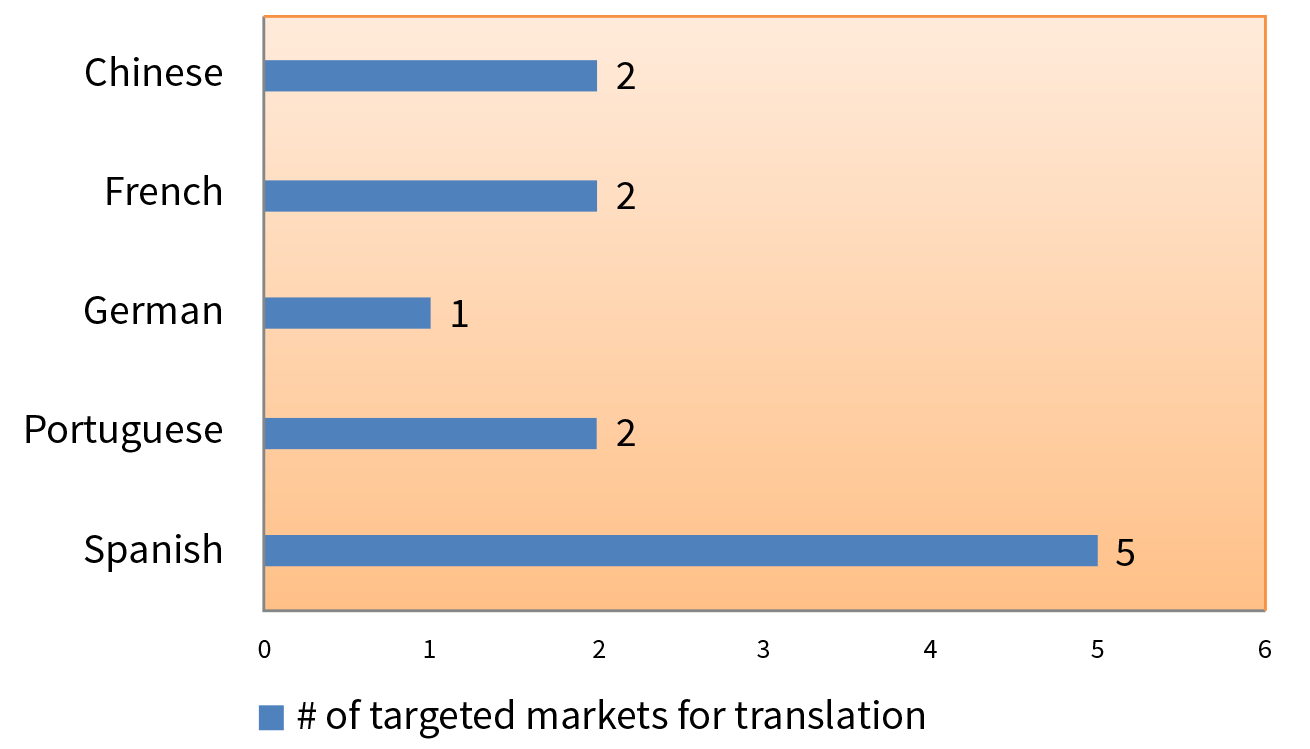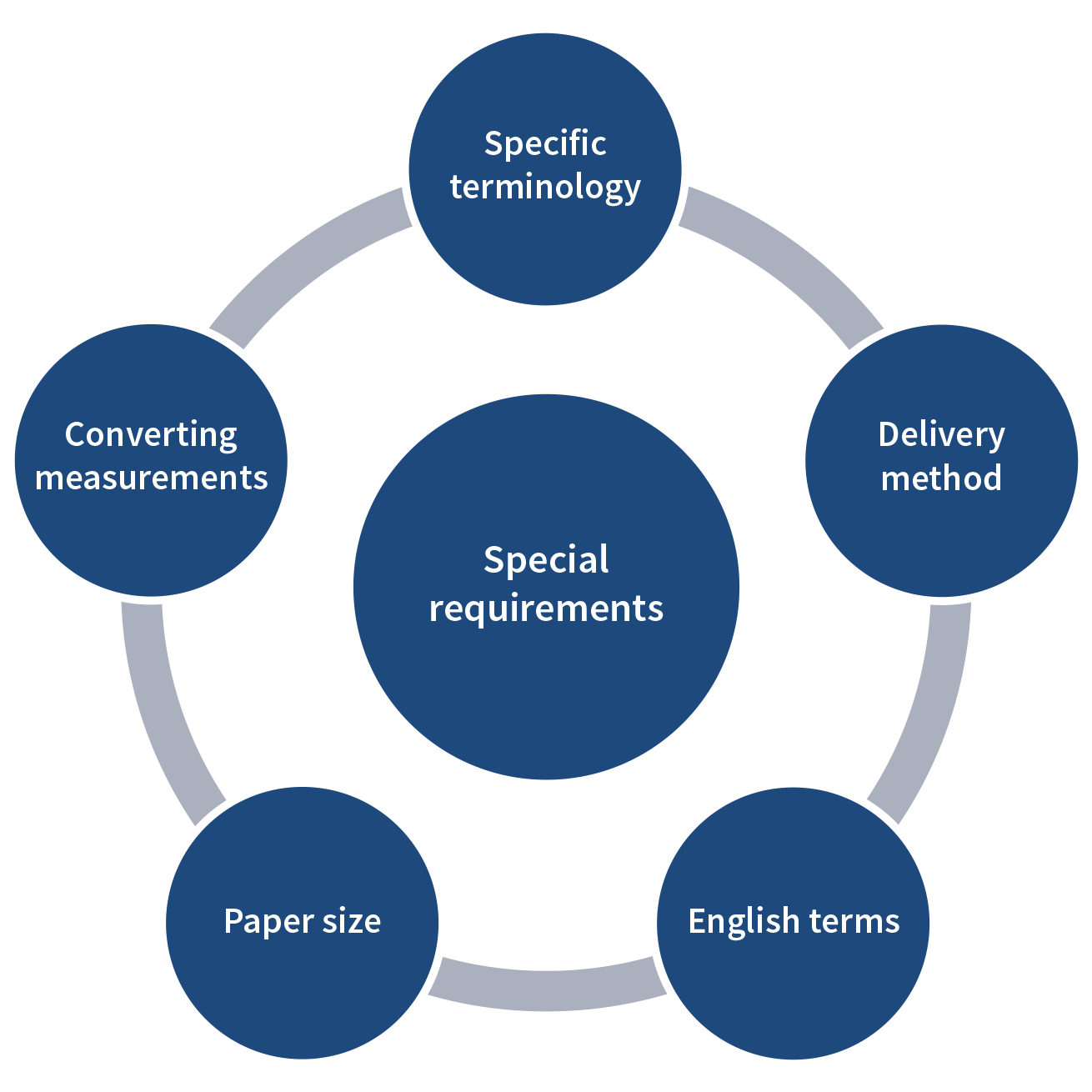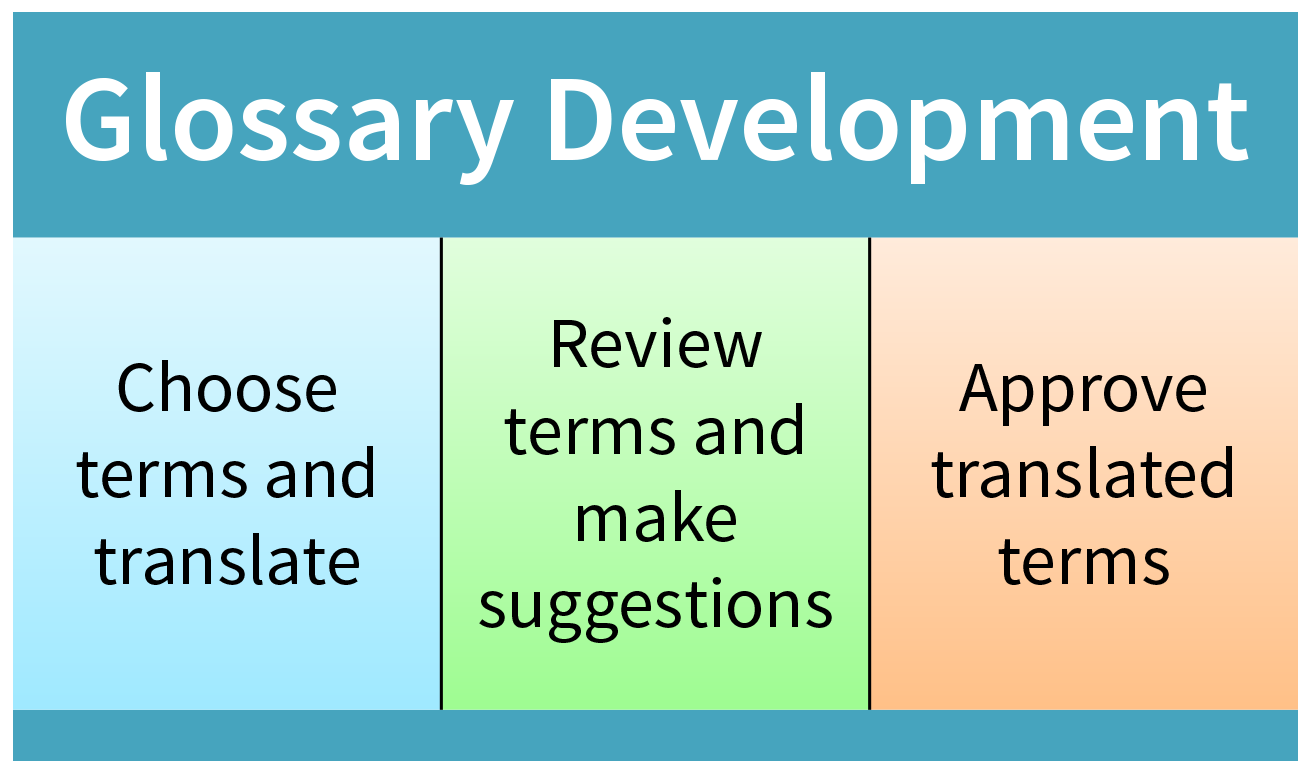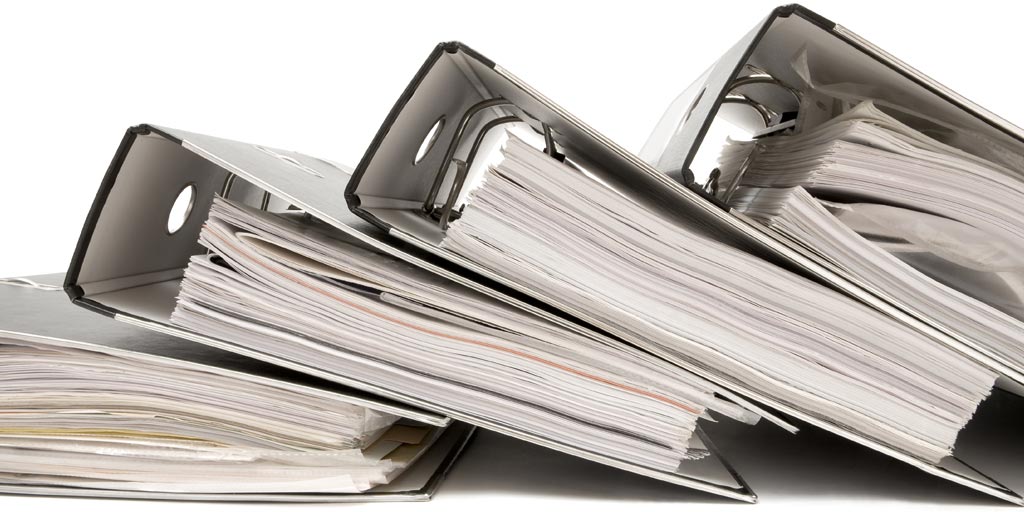Document translation into multiple languages requires preparation…
…before you send out a quote request.
So what are the first steps?
Before jumping straight into translating for your target audience, consider these 7 document translation tips.
Specify your target language(s)
While you may know the language you need translation for, there are some languages that require you to consider the region or countries you are targeting.
Trivia: What does Spanish, French, Portuguese, and Chinese all have in common?
Answer: They all have linguistic differences based on location.

Let’s say you want an English to Spanish document translation. English to Spanish is a common request, and your translation provider will need to know which Spanish-speaking market you are targeting.
There are numerous regions that speak Spanish- all having slightly different terminology and sometimes different grammar. Some companies target the US Hispanic market with Spanish translation, some companies use English to Spanish document translation services to translate into a “Universal Spanish” for a general coverage of Spanish translation.
Ensure documents are finalized before sending for translation
Take time when authoring your documents, and then ask your colleagues for their input. It is ideal to have several people review your documents prior to sending them out for translation. This helps to ensure accuracy, comprehensibility, and completeness.
With larger projects, it is likely that you’ll need to change a few minor things within your document while the translation project is in motion. As a translation project manager, I expect that this will happen; however, be aware that last minute edits or changes could alter the completed translation, which in turn causes delays and confusion for both parties.
It is best to thoroughly edit your document before starting the document translation process.
Consider the project scope
How much does content need to be translated in your documents? What is the ideal completion date? Knowing these answers are key to your company’s planning.
For example, if you were in the tourism industry aiming to attract an international audience, you may consider a PDF document translation of your marketing brochure to achieve that. You then need to estimate when you need this project completed by to develop a timeline.
Estimating the scope also includes informing your document translation team of any specific requirements that they should take note of.

Estimate a reasonable turnaround time
Creating a timeline prior to project launch is an essential step for document translation. Timelines help to keep organized and on track as you work with your document translation partner to complete the project.
For example, if the total text adds up to 100k words, and the desktop publishing efforts will take 9 days to complete (plus an additional 3 days to QA and finalize it all), it is realistic to assume that a project of this size will take longer than one week to complete.
Most translators can usually translate anywhere between 2000 to 2500 words per day. We use that as a reference and have a document translation delivery formula to determine a delivery date.
Interpro’s generic document translation delivery date formula:
Interpro’s generic post DTP QA formula:
Here’s an example:
Let’s say you have a 10000-word document going into 3 languages: French, Spanish, and Brazilian Portuguese. Since the word count is high, we recommend using 2 translators. DTP hours are determined by the multilingual desktop publishing team. The DTP team determines how many hours they will take after analyzing the scope of the project: file type, images, technical nature, and word count. With a 10000 word count, let’s assume that the DTP hours are estimated at 8 hours per language, and only one DTP resource is available to work on the document.
Now we know that if you have a 10000-word document translated into 3 languages, it will take about 8 business days.
If your project is a rush, you can always ask your document translation team how quickly they can complete the project, and try to make adjustments in order to speed up the project timeline.
Consider the format your final deliverables will be in
Ask your language service provider which file formats they support. Once you decide on file formats, think about how to hand off the materials to them. Considering how these materials will be used after document translation is completed is important to help avoid issues later on in the project cycle.
Writing out detailed summaries and instructions for your project team in order to avoid confusion or issues down the road is beneficial.
I appreciate it when my clients identify their questions or concerns from the get-go so that we can work together to figure out creative ways to prevent any potential problems before they occur.
Create a glossary with translation team and in-country reviewer
When you have a document translation project with a large amount of content, creating a translation glossary will establish your specific, technical terminology in the beginning of the process. Creating a glossary entails finding a certain number of words (the number depends on the size of your project), and making use of an in-country reviewer from your company’s team.
Translation glossary development process:

Once the glossary terms have been chosen by your translation provider and/or your team, and your list of words are translated, your in-country reviewer will take a look at the list and approve the proposed translations.
If the reviewer has any objections to the proposed translations, he or she will suggest a different term, which then needs to be sent back to the linguistic partner, who must then approve it.
It usually takes about two to three rounds for all of the proposed translations to be agreed upon by both parties (the client and the linguistic partner), and this must be done before beginning the actual document translation. Once the initial glossary is established, the translation will begin, and the glossary will be used throughout as the linguistic partners localize your text.
Although creating a glossary adds time to the project upfront, many clients find that taking this extra time is beneficial as it makes the translation process smoother and ensures consistent translations of the most common terms in your document.
The glossaries you create for one project can also be used in future projects.
Price document translation services
Figure out the fine details of your project and establish a budget for it. Make sure that the budget is realistic for the amount of work to be done. Document translation services will become less expensive over time by utilizing the benefits of translation memory (often referred to as a TM).
Document translation services rates will mostly be priced per word. Other factors that go into pricing are language, file format, technical nature, and project management.
Conclusion
Translation project managers I know say that a project manager’s role “officially” begins upon final quote approval from the client.
As I gain more experience as a translation project manager, I have found that this is far from the truth. In fact, I often find myself advising clients on how to go about certain tasks prior to project launch. I am always happy to help, even before a client gives final approve for a project because this results in a flawless final product.
More information on our document translation services.




